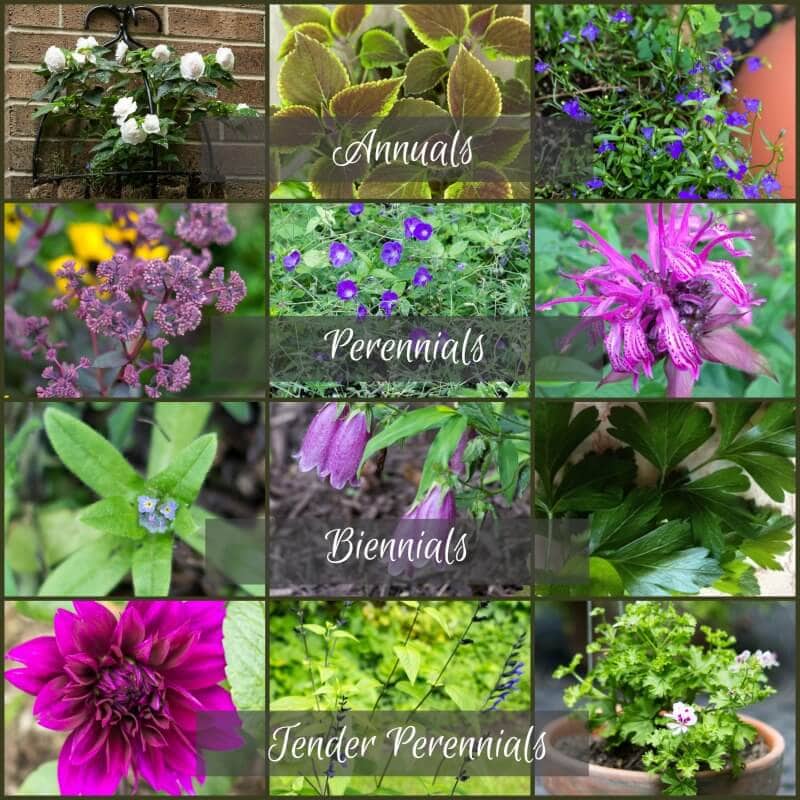Annuals Vs. Perennials: Which Flowers Are Right For Your Garden?

Table of Contents
Understanding Annual Flowers
Annual flowers complete their entire life cycle – from seed to flower to seed – within a single growing season (usually one year). This means they need to be replanted each year to enjoy their blooms continuously.
Advantages of Annuals:
- A Riot of Color and Variety: Annuals offer an unparalleled diversity of colors, shapes, and sizes. From delicate petunias to bold zinnias, the possibilities are endless. This allows for dynamic garden design and creative combinations.
- Fast-Paced Beauty: Annuals are fast-growing, quickly adding vibrant color to your garden. They’re perfect for instant gratification and creating a stunning display in a short time.
- Versatile Fillers: Need to fill gaps in your flowerbeds or create a quick burst of color? Annuals are your go-to solution. They’re excellent for adding pops of color around existing plants or filling in bare patches.
- Container Gardening Champions: Annuals are exceptionally well-suited for container gardening and hanging baskets. Their compact growth habits make them ideal for these spaces.
- Popular Annual Examples:
- Petunias
- Zinnias
- Marigolds
- Impatiens
- Begonias
- Salvia
Disadvantages of Annuals:
- The Annual Replanting Ritual: The biggest drawback is the need to replant every year. This involves purchasing new seeds or plants, increasing both cost and effort.
- Weather Vulnerability: Annuals are often less tolerant of harsh weather conditions. Extended periods of frost, extreme heat, or heavy rain can significantly impact their growth and longevity.
- Fickle to Frost: Many annuals are highly sensitive to frost and cold temperatures, requiring protection or replacement if a frost occurs.
- Higher Maintenance: Annuals typically require more frequent watering and fertilizing to maintain their vibrant blooms. This increased maintenance is a factor to consider.
- Climate and Maintenance Considerations: Choosing annuals suitable for your specific climate is crucial to ensure their survival and success. Consider your watering capabilities and willingness to commit to regular fertilizing and deadheading.
Exploring Perennial Flowers
Perennials, unlike annuals, live for more than two years, returning year after year to grace your garden with their beauty. This longevity makes them a valuable asset for any garden design.
Advantages of Perennials:
- Long-Term Investment, Long-Term Beauty: The initial investment in perennials pays off year after year. They require less frequent replacement, saving you money and effort in the long run.
- Resilient Nature: Perennials are often more resilient to changing weather conditions and common garden pests. This makes them low-maintenance and less demanding.
- Garden Structure and Interest: Perennials establish a more permanent structure and provide visual interest throughout the growing seasons. Their diverse foliage and blooming habits create a continuously evolving landscape.
- Pollinator Powerhouses: Many perennials are attractive to beneficial pollinators, such as bees and butterflies, contributing to a healthy garden ecosystem.
- Popular Perennial Examples:
- Coneflowers
- Daylilies
- Hostas
- Lavender
- Sedum
Disadvantages of Perennials:
- Slow and Steady: Perennials are slower to establish than annuals and may take a few years to reach their full mature size and flowering potential. Patience is key.
- Careful Garden Planning: Successful perennial gardening requires careful planning and placement. Consider mature size, sunlight requirements, and soil conditions when planting.
- Maintenance Matters: Some perennials require division or pruning to maintain their health and prevent overcrowding. This is a necessary maintenance task to keep them thriving.
- Pest and Disease Susceptibility: While generally more resilient, certain perennials may be susceptible to specific diseases or pests. Researching the specific needs of your chosen plants is important.
- Garden Design and Maintenance Considerations: Prioritize selecting perennials suitable for your soil type, sunlight exposure, and desired garden aesthetic. Be prepared to address any pest or disease issues promptly.
Choosing the Right Flowers for Your Garden Style and Needs
The decision between annuals and perennials depends largely on your personal preferences, climate, gardening skills, and budget.
Consider Your Climate:
Choosing hardy plants that thrive in your specific region's winter conditions is crucial for both annuals and perennials. Research plants known to survive your local climate and winter hardiness zones.
Assess Your Gardening Skills and Time Commitment:
Annuals demand more frequent care, including watering, fertilizing, and deadheading. Perennials, once established, require less intensive maintenance. Choose plants that align with your available time and gardening expertise.
Define Your Aesthetic Goals:
Do you prefer a constantly changing display of colors and textures, characteristic of annuals? Or are you seeking a more stable, long-lasting garden structure that evolves gradually, a hallmark of perennials?
Budget Considerations:
While annuals might have higher upfront costs due to yearly replacement, perennials offer long-term cost savings. Consider your budget when making your selection.
Decision Checklist:
- Climate: What is your hardiness zone?
- Time Commitment: How much time can you dedicate to gardening?
- Gardening Experience: Are you a beginner or experienced gardener?
- Aesthetic Preference: Do you prefer a constantly changing or stable garden?
- Budget: What is your budget for plants and ongoing maintenance?
Conclusion: Making the Right Choice for Your Garden with Annuals and Perennials
Ultimately, the best choice between annuals and perennials depends on your individual needs and preferences. Annuals offer vibrant, quick-blooming displays, while perennials provide long-lasting structure and less demanding maintenance. By carefully considering your climate, gardening skills, aesthetic goals, and budget, you can create a garden that brings you joy for years to come. Start researching specific annuals and perennials suited to your needs and begin planning your garden design based on this "Annuals vs. Perennials" guide. Happy gardening!

Featured Posts
-
 Producers Tease Continuation Of Caitlyn And Vis Arcane Storyline
May 29, 2025
Producers Tease Continuation Of Caitlyn And Vis Arcane Storyline
May 29, 2025 -
 Pop Mart X Riot Games Arcane League Of Legends Blind Box Collection Unveiled
May 29, 2025
Pop Mart X Riot Games Arcane League Of Legends Blind Box Collection Unveiled
May 29, 2025 -
 Stranger Things 5 Details And Speculation On The Final Season
May 29, 2025
Stranger Things 5 Details And Speculation On The Final Season
May 29, 2025 -
 Luca Marini On Aleix Espargaros Moto Gp Return A Rival Among Many
May 29, 2025
Luca Marini On Aleix Espargaros Moto Gp Return A Rival Among Many
May 29, 2025 -
 Shop Nike Air Max Excee Sale Prices As Low As 57
May 29, 2025
Shop Nike Air Max Excee Sale Prices As Low As 57
May 29, 2025
Latest Posts
-
 New Covid 19 Variant Is It Fueling The Recent Surge In Cases
May 31, 2025
New Covid 19 Variant Is It Fueling The Recent Surge In Cases
May 31, 2025 -
 Covid 19 Case Rise The Role Of A Newly Identified Variant
May 31, 2025
Covid 19 Case Rise The Role Of A Newly Identified Variant
May 31, 2025 -
 Alcarazs Path To The Monte Carlo Final
May 31, 2025
Alcarazs Path To The Monte Carlo Final
May 31, 2025 -
 Understanding The New Covid 19 Variant And Its Impact
May 31, 2025
Understanding The New Covid 19 Variant And Its Impact
May 31, 2025 -
 Indian Wells 2024 Tsitsipas Triumphs Medvedev Advances
May 31, 2025
Indian Wells 2024 Tsitsipas Triumphs Medvedev Advances
May 31, 2025
